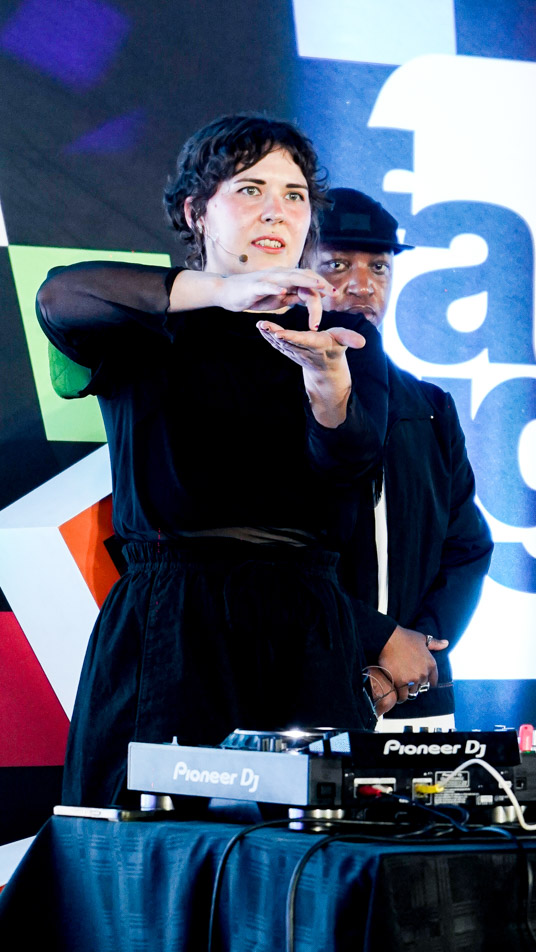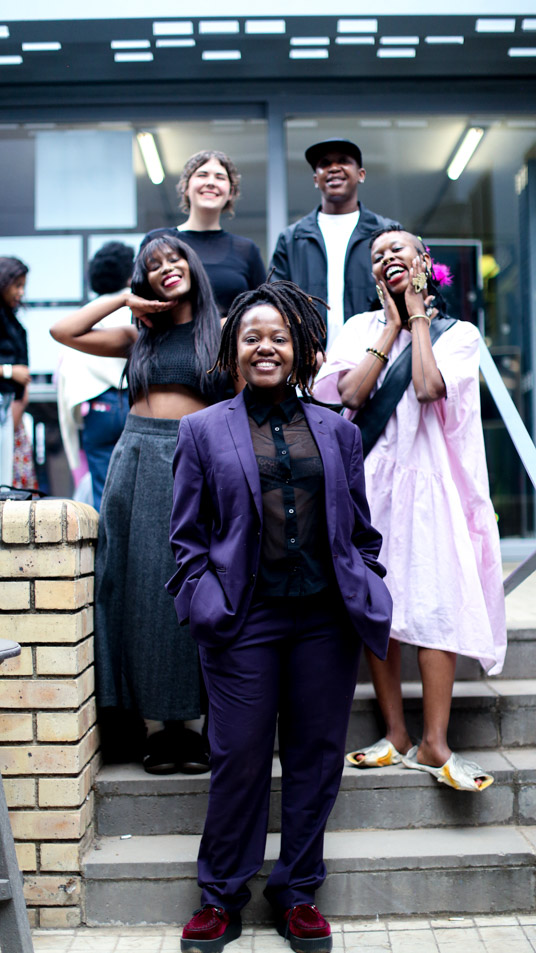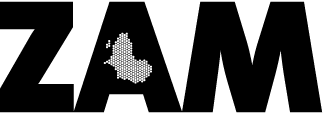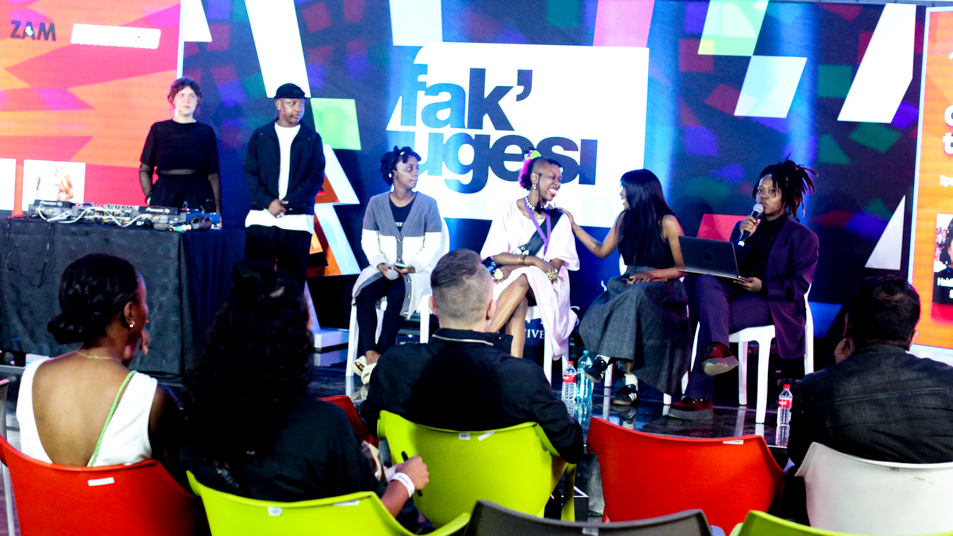Held in Johannesburg’s Braamfontein district during the weekend of 11 October, Fak’ugesi 2025’s Power Surge theme came alive, spotlighting African digital innovation in spaces that merge creativity, technology, and radical imagination. At the heart of the well attended festival, full of young and experienced, yet always curious lovers of tech, the transcontinental symposium Glitching the Future brought together artists, theorists, and performers.
The Glitching the Future symposium, presented as an experimental happening, featured Natalie Paneng, Lindiwe Mngxitama, Thulisile Binda, and P_ssy Party, each offering distinct perspectives on art, technology, and decolonial futurity. Conceptually, we explored Labour, Love, and Liminality: examining AI and automation’s effects on work and wages; probing the shifting depths of human connection online; and reflecting on the environmental, ethical, and cosmic stakes of digital infrastructure, but each of us coming from distinct departures.
We intentionally curated the symposium across experimental and playful registers. Thulisile Binda, stepping in at the last minute, delivered a movement-based, tech-infused performance that activated the space. P_ssy Party injected a deeply sonic sensibility, offering a lecture-performance tracing DJ culture and the evolution from kwaito to amapiano. Lindiwe Mngxitama provided an incisive intellectual framing, threading the reflections together and articulating the project’s foundations in Black intellectual traditions, like Glitch Feminism.
Natalie Paneng is a celebrated South African new media artist and performer, whose participation in our symposium was a true highlight. We are thrilled that she has already expressed interest in contributing to future iterations. Paneng’s work navigates local futurisms and embodied storytelling, crafting multi-sensory experiences that interrogate conventional narratives and expand the possibilities of human-technology interaction.
Paneng’s contribution to our symposium included an original audiovisual work, performed in situ Anchored by the video and layered vocal manipulations, Paneng transformed somatic gestures and destabilised conventional narratives. The work functioned as an archival echo and self-contained rhizomatic node, interweaving live and recorded elements within our discursive frame. Together, these modalities choreographed attention, compelling the audience towards a reflection of technological mediation. As one of the attendees noted, “It was a moment!”
During the symposium, we had intended to stream live to the Open Art Exchange in Schiedam, Netherlands where ZAM was hosting a fundraising exhibition. Despite extensive pre-event tests, Wi-Fi and broadcast issues caused delays and distortions. Future iterations could explore how audio and latency issues might be not only resolved but embraced, transforming glitches into creative openings. Amid logistical pressures, we had to lean into improvisation, where collective creativity thrived in the face of technological limitations.
In The Undercommons: Fugitive Planning & Black Study, Fred Moten and Stefano Harney explore the concept of "the break," describing it as a state of disorientation that is not merely unfortunate but necessary. This disorientation arises from being in motion without a fixed location, embodying a form of fugitivity that resists institutional structures. They suggest that this state of being — "a being together in homelessness" — enables a form of collective study and resistance that is not bound by conventional narratives or spaces.
Following from the cultural instincts of thinkers like Moten and Harney, our project has consistently embraced improvisation and collective engagement amid systemic constraints. Ideas for a follow-up are already taking shape: even with funding concluded. A virtual edition could bring together original and new contributors remotely, while intimate, project-based spaces near campuses could disrupt academic settings. Strategically timed, future iterations might also be integrated into coursework, giving students direct engagement with the material.
Sean Fitzpatrick, Executive Director of ZAM “It could be something that’s not just a one-time thing, but a living part of the ZAM brand and the Glitching the Future entity.”
“The break” mirrors the glitch so pertinently, because it turns disruption into generative moments rather than failures. At the symposium, disorientation became a catalyst for reimagining possibilities, opening a “wild beyond” where ingenuity and resilience won the day. Imagine what more we could achieve! More than an event, the Glitching the Future symposium was a loose dress rehearsal for the ongoing manifestation of futures being written on African terms, reminding us again that the continent is not catching up; it is and has always been way ahead.
The Glitching the Future project and the symposium are made possible through the generous support of the Creative Industries Fund NL





